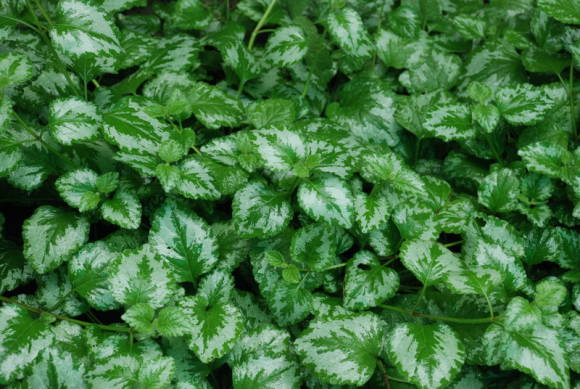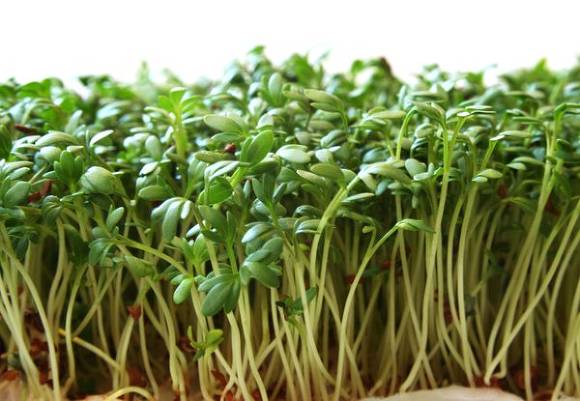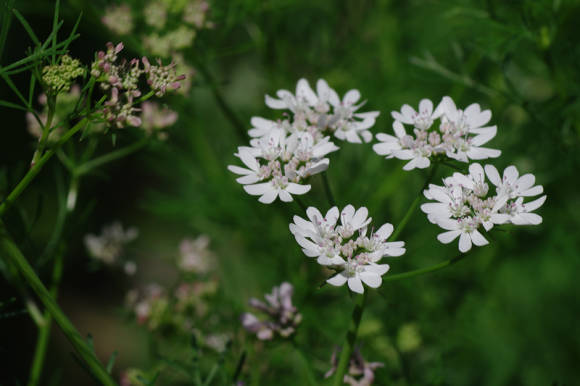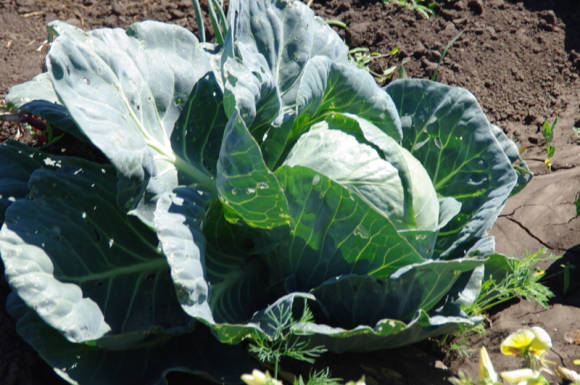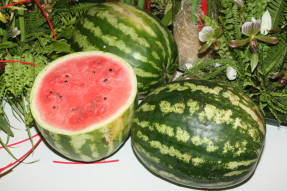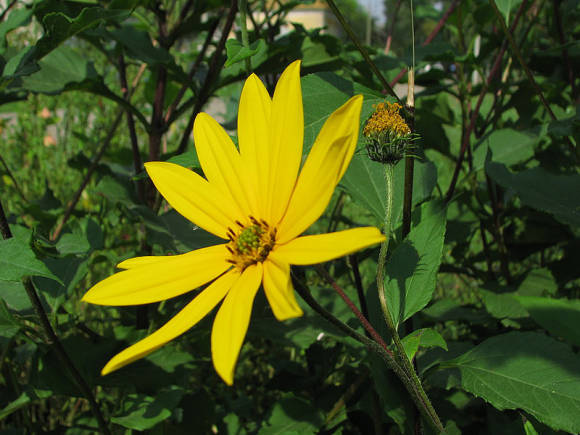 Borage - cucumber herb Borage - cucumber herb |
How nice fresh cucumbers smell, especially when their season has not yet arrived. But nature gave us a wonderful plant that combines not only a cucumber smell, but also a lot of useful properties. For this he was "christened" - cucumber herb, and its scientific name Borage medicinal (Borago officinalis).
There are two versions of the appearance of the Latin name. First that is the word "Borago" - distorted arabic "Abu rush" - the father of sweat, which indicates its diaphoretic action. According to another, the name comes from Latin "Burra" - coarse woolen fabric, which indicates a strong pubescence of the plant.
This short annual plant resembles both lungwort and comfrey, only greatly reduced, but has ... a cucumber smell. It reaches a height of 60 cm. On a short-pubescent stem, elliptical, wrinkled, wavy leaves along the edge sit, and the stem is crowned with a curl of lilac or less often white drooping flowers, similar to five-pointed stars. The whole plant is rough to the touch. Borage blooms in June-July. Seeds - wrinkled brown or black nuts, ripen in July-August. Weight 1000 pieces 13-18 g.
During the campaigns, Roman soldiers enthusiastically chewed cucumber herb to arouse courage. In the legions of Caesar there was even a song on this topic: "Having refreshed myself with cucumber grass, I always go boldly ...". The crusaders also drank wine infused with borage before the battle "for courage". Its medicinal properties have been known for a long time, and its names were quite eloquent - "Joy of the heart", "heart flower". Flowers during the time of Queen Elizabeth I (in England) were added to salads to evoke pleasant thoughts. Wine was insisted on them to "amuse the people" and cough syrups were brewed. At the end of the 16th century, English herbalists treated sleepwalking, melancholy, and bad mood with borage flower syrup. As it turned out, this use of it was quite reasonable. It has been proven that preparations from this plant stimulate the adrenal cortex and promote the production of adrenaline, and this naturally increases the tone.
Grass collected during flowering or flowers is used as a medicinal raw material. They are cut and dried in the shade in a well-ventilated area. If dried in the sun, the flowers very quickly lose their color. It is not recommended to dry raw materials at temperatures above + 40 ° C. Leaves and flowers contain saponins, mucus, tannins, vitamin C, malic and citric acids, potassium and calcium.
How is cucumber herb used in folk medicine?
Flowers and leaves used as antipyretic, antirheumatic, diaphoretic, expectorant for pleurisy and whooping cough, diuretic. Considering that borage stimulates the adrenal cortex, it has a noticeable anti-inflammatory effect, which makes it possible to use it for rheumatoid and metabolic arthritis, as well as for eczema. The plant has the ability to alleviate premenstrual syndrome. The plant is sometimes recommended as a milk-producing agent, but given the alkaloids content, it is better to refrain from this. The leaves are used for depression and to overcome the negative effects of steroid therapy.
Borage seeds are of great interest in modern European studies.... Seeds in terms of the content of polyunsaturated fatty acids, they will compete with the two-year-old donkey, whose oil under the commercial name "Evening primrose oil" can be found in a pharmacy at an exorbitant price. Borage Seed Fatty Oil contains omega-3 fatty acids and omega-6 fatty acids as well as γ-linolenic acid. Thanks to the F-vitamin activity, it relieves the condition of patients with eczema, regulates the menstrual cycle. Oil extract of seeds is used for rheumatoid arthritis, eczema and hangover syndrome, 500 mg.
In rheumatoid arthritis, the daily dose is about 7 g of oil, which corresponds to 1.4 γ-linolenic acid. Its main action is to suppress the substances that accompany the process of inflammation in the body, in particular, prostaglandins. These results are confirmed by extensive clinical trials in patients with rheumatoid arthritis and skin diseases. However, borage fatty oil is contraindicated in epilepsy and taking anticoagulants, drugs that reduce blood clotting.
Now how to cook borage as a medicinal plant
The infusion is prepared from one tablespoon of dry raw materials and a glass of boiling water. Insist before cooling, filter and take 1 tablespoon 3 times a day. A similar infusion is used as an anti-inflammatory agent for diseases of the urinary tract and as an expectorant for bronchitis, tracheitis, pharyngitis.
Juice is squeezed out of the fresh plant. It is diluted with water 1: 1 and lubricated with irritation and neurodermatitis, as well as with problematic facial skin as a cosmetic product. Drink juice 10 ml 3 times a day for depression.
Borage in cooking
For use as a vegetable plant, the leaves are preferably harvested before flowering. The culinary delights of this plant are very varied. Different countries have their own recipes. For example, in Greece, the leaves are canned in a vinegar marinade and used as a side dish for meat dishes. In Nice and some parts of Italy, the leaves are used as filling for pies.
Leaves and shoots have a refreshing, slightly pungent taste. Chopped leaves seasoned with vinegar, oil and salt make a delicious spring salad. You can mix the leaves with radishes, potatoes, sorrel, green onions. Or you can prepare more exotic but very healthy green salads by mixing borage leaves with primrose leaves, nasturtium, or scalded nettle leaves.
Leaves stewed with onions or mushrooms can be used as a pie filling. Fresh flowers are put in kvass, okroshka, and they are also used to decorate various dishes.
The flight of fantasy is not limited.
Borage omelet
It makes sense to try this simple recipe from a French cookbook at home.
To do this, you will need 750 g of fresh cucumber leaves, 6 eggs, 100 g of grated cheese, 2 cloves of garlic, salt, thyme, anise.
Beat eggs and add grated cheese. Cut the leaves into thin strips and mix with the beaten eggs. Leave to stand for 5 minutes. Heat the vegetable oil in a skillet and pour the mixture. Fry on each side for 5 minutes and the omelet is done. Place the hot omelet on a plate and sprinkle with chopped thyme and anise.
Growing
It is absolutely easy to grow this plant. Borage tolerates light shading and prefers well-hydrated fertile soils. It blooms for a long time, and it grows quickly, so it can be planted in a conspicuous place on the site, and not hidden in secluded corners. Seeds are sown in spring, in early May, without prior preparation. The seeding depth is about 3 cm, the distance between the rows is 40-45 cm. You will not have to wait for seedlings for a long time. If they turn out to be too thick, then it is better to thin them out and leave no more than 15 plants per 1 m row. Otherwise, the leaves will be small and harder to harvest.
Borage is not only useful, but also decorative |
To get an early harvest, the plants can be sown in pots at the end of March, and at the age of 3-4 leaves they can be planted under a film. And to get a late harvest, on the contrary, seeds are sown in August.
Care consists in weeding and, if possible, in a dry summer - in watering, so that the leaves do not become leathery and tough.
Another remarkable feature of the plant is the absence of pests and diseases. Just the dream of any gardener. And besides, this is a wonderful honey plant, the honey productivity of which is up to 200 kg / ha.
When cutting raw materials, do not forget that borage is an annual and the next year you will need seeds for sowing. Therefore, leave 3-4 plants. It is not worth waiting for all the seeds to ripen. Their maturation is very uneven. And if you wait for the latter, then the first largest will simply crumble. Therefore, when the last flowers begin to bloom, cut off the peduncles and lay out on paper in a dry place. As it dries, the unripe seeds will ripen, and the ripe ones will spill out onto the paper. After that, you can collect them and calmly wait for the next season. Seeds retain their germination capacity for 5 years.
Borage is an excellent honey plant with early, and in the case of August crops, very late flowering. It is eagerly visited by bees, and the honey turns out to be light and transparent.
Varieties
"Vladykinskoe Semko" characterized by a semi-spreading rosette, a large, oval and strongly pubescent leaf. The inflorescence is spreading, corymbose-paniculate. The flower is large, blue. Recommended for summer cottages and farms.
"Dwarf" - a plant with a height of 30-60 cm with a strongly branched and pubescent stem. The rosette is raised and consists of 22-25 leaves. Strong cucumber aroma. The variety is resistant to low temperatures in the early spring period. The period from germination to harvest (leaves) is 30 days.
In addition, varieties “Okroshka "," Stream " and "April".
Photo by the author


